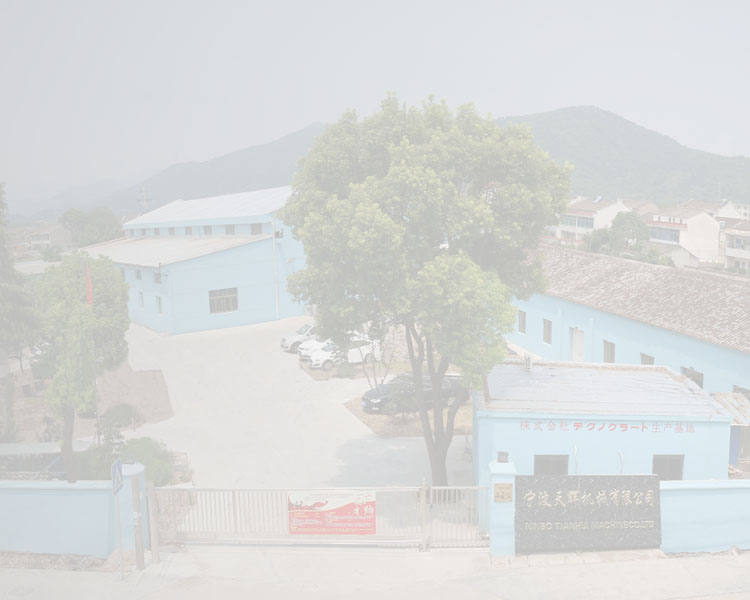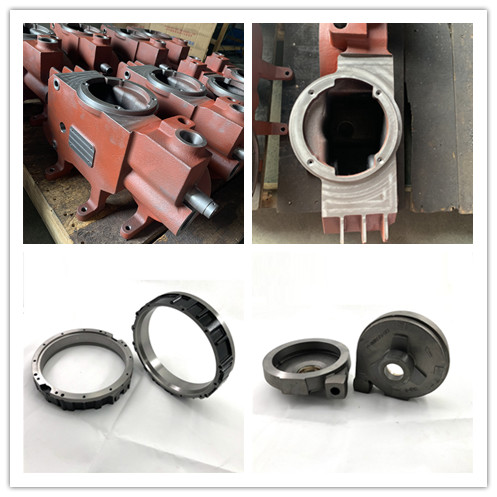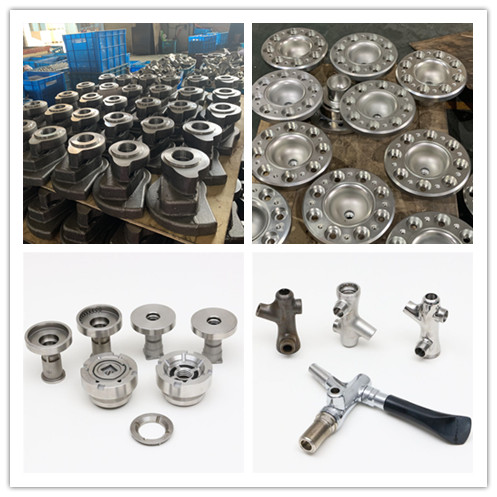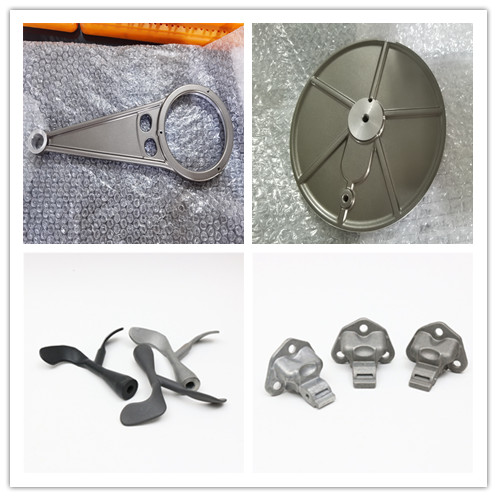
1. Ordinary sand casting
The basic raw materials for making sand molds are foundry sand and molding sand binder. The most commonly used foundry sand is siliceous sand. When the high temperature performance of silica sand cannot meet the requirements of use, special sands such as zircon sand, chromite sand and corundum sand are used. The most widely used molding sand binder is clay, and various drying oils or semi-drying oils, water-soluble silicates or phosphates, and various synthetic resins can also be used as molding sand binders. The outer sand mold used in sand casting is divided into three types: clay wet sand mold, clay dry sand mold and chemical hardened sand mold according to the binder used in the molding sand and the way of building its strength.
advantage:
Clay is rich in resources and cheap. Most of the used clay green sand can be recycled and reused after proper sand treatment; the casting cycle is short and the work efficiency is high; the mixed molding sand can be used for a long time; the adaptability is very wide. Small pieces, large pieces, simple pieces, complex pieces, single pieces and large batches can be used;
Disadvantages and limitations:
Because each sand casting mold can only be poured once, the casting mold is damaged after obtaining the casting and must be reshaped, so the production efficiency of sand casting is low; the rigidity of the casting mold is not high, and the dimensional accuracy of the casting is poor; the casting is easy to produce Defects such as sand washing, sand inclusion, and pores.

2. Investment casting
When using wax to make patterns, investment casting is also called "lost wax casting". Investment casting usually refers to making a pattern in a fusible material, coating the surface of the pattern with several layers of refractory material to make a mold shell, and then melting the pattern out of the mold shell to obtain a mold without parting surface. A casting solution that can be filled with sand. Because patterns are widely made of waxy materials, investment casting is often referred to as "lost wax casting". The types of alloys that can be produced by investment casting include carbon steel, alloy steel, heat-resistant alloys, stainless steel, precision alloys, permanent magnet alloys, bearing alloys, copper alloys, aluminum alloys, titanium alloys, and ductile iron.
advantage:
High dimensional accuracy. Generally up to CT4-6 (sand casting is CT10~13, die casting is CT5~7); it can improve the utilization rate of metal materials. Investment casting can significantly reduce the processing volume of the forming surface and mating surface of the product, save the consumption of processing table and cutting tool materials; it can maximize the similarity between the blank and the part, and bring great benefits to the structural design of the part. convenient. Casting castings with complex shapes Investment casting can cast castings with very complex shapes, as well as castings with a wall thickness of 0.5mm and a weight as small as 1g, and can also cast combined and integral castings; it is not limited by alloy materials. The investment casting method can cast carbon steel, alloy steel, ductile iron, copper alloy and aluminum alloy castings, as well as castings of high temperature alloys, magnesium alloys, titanium alloys and precious metals. For alloy materials that are difficult to forge, weld and cut, it is especially suitable for precision casting; investment casting with high production flexibility and adaptability is suitable for mass production, small batch production or even single-piece production.
Disadvantages and limitations:
The size of the casting should not be too large, and the process is complicated, and the cooling rate of the casting is slow. Investment casting has the most complex process among all the blank forming methods, and the casting cost is also high, but if the product is selected properly and the parts are designed reasonably, the high casting cost will be compensated by reducing cutting processing, assembly and saving metal materials, etc. Then investment casting has good economy.

3. Die casting
The principle of die casting process is to use high pressure to press molten metal into the cavity of a precision metal mold at high speed, and the molten metal cools and solidifies under pressure to form castings. Cold and hot chamber die casting are two basic ways of die casting process. In cold chamber die casting, the molten metal is poured into the pressure chamber by manual or automatic pouring devices, and then the injection punch advances to hydraulically press the metal into the cavity. In the hot-chamber die-casting process, the pressure chamber is perpendicular to the crucible, and the molten metal automatically flows into the pressure chamber through the feed port on the pressure chamber. The injection punch moves downward, pushing the molten metal through the gooseneck into the cavity. After the molten metal solidifies, the die-casting mold is opened, the casting is taken out, and a die-casting cycle is completed.
advantage:
The product is of good quality. Castings have high dimensional accuracy, generally equivalent to grade 6~7, or even up to grade 4; good surface finish, generally equivalent to grade 5~8; high strength and hardness, the strength is generally 25~30% higher than that of sand casting, but the extension The production rate is reduced by about 70%; the size is stable and the interchangeability is good; it can die-cast thin-walled and complex castings; the production efficiency is high, for example, the domestic JIII3 horizontal cold-air die-casting machine can die-cast 600-700 times in eight hours on average, and the small hot-chamber die-casting The machine can die-cast 3000~7000 times every eight hours on average; the die-casting mold has a long service life, one pair of die-casting molds, die-casting bell alloy, the service life can reach hundreds of thousands of times, even millions of times; easy to realize mechanization and automation; excellent economic effect. Due to the precise size of the die-casting parts, the surface is smooth and clean. Generally, it is not used directly without mechanical processing, or the processing volume is very small, so it not only improves the metal utilization rate, but also reduces a lot of processing equipment and man-hours; the price of castings is easy; combination die-casting can be used to make other metal or non-metallic materials. . Saves both assembly man-hours and metal.
Disadvantages and limitations:
During die casting, due to the high speed of liquid metal filling the cavity and the unstable flow state, the general die casting method is used. Metal), the life of the die-casting mold is low; it is not suitable for small batch production.

Welcome to contact us for more information.

Copyright © Tianhui Machinery Co.,Ltd All Rights Reserved Website Map XML